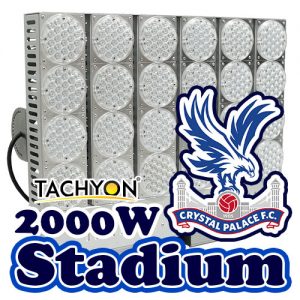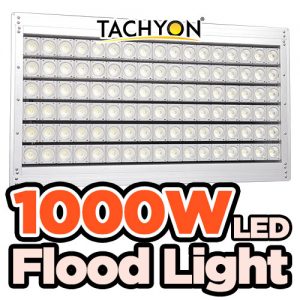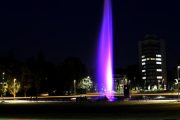Definition
Illumination intensity is a physical term that refers to the luminous flux of visible light received per unit area. Referred to as illuminance, the unit is Lux or lx. It is used to indicate the intensity of the light and the amount of the surface area of the object being illuminated.
In photometry, “luminance” is the density of luminous intensity in a specified direction, but it is often misunderstood as illuminance. The international unit of luminosity is the candlelight accepted per square meter (called candela in Mainland China, Hong Kong and Macau).
The light intensity has a great influence on the photosynthesis of organisms. It can be measured by an illuminance meter.
The illumination/illuminance on a surface illuminated by light is defined as the luminous flux illuminating a unit area.
Suppose the luminous flux on the facet dS is dΦ, then the illuminance E on this facet is: E=dΦ/dS.
1 lx=1 lm/㎡. For an object that is uniformly illuminated by light, when the luminous flux obtained on an area of 1 square meter is 1 lumen, its illuminance is 1 lux. Lumen is a unit of luminous flux.
A point light source with a luminous intensity of 1 candela has a luminous flux of “1 lumen” per unit solid angle (1 steradian).
Candlelight (Candela), transliteration “Candela”. The concept of candlelight was first invented by the British, and it is a unit of luminous intensity.
At that time, the British used a pound of white wax to create a one-foot-long candle to define the unit of candlelight. But today’s definition has changed: heating with a black luminous body of one cubic centimeter until the luminous body melts into a liquid, 1/60 of the amount of light emitted is the standard light source, and candlelight is the standard light source. The unit of the amount of light emitted.
Related Terms for Luminous Intensity
- Natural lighting and artificial lighting
Sunlight is natural lighting, and light lighting is artificial lighting.
- Light cycle and light time
In nature, 24 hours a day and night is a photoperiod. The time with light is the bright period, and the time without light is the dark period. In natural light, the sunlight time (bright period) is generally calculated as the sunshine time; in artificial light, the light exposure time is the light time, and the 24h light cycle is the natural light cycle; the longer or shorter than 24h is called unnatural light Cycle; if there is only one bright period and one dark period within 24h, it is called single-period illumination; if there are two or more bright or dark periods within 24h, it is called intermittent illumination. The sum of the bright period in a photoperiod is the photoperiod.
- Luminous intensity
The amount of luminous flux transmitted by a light source within a solid angle in a certain direction. Unit: Candela (candela, cd).
- Luminous flux
The light energy radiated by the light source per unit time is called the luminous flux of the light source, and its unit is lumens (the amount of light on a 1 square foot area where each point is 1 foot away from a 1 candle light source is 1 lumen).
- Related definitions
Illuminance is the degree to which an object is illuminated. That is, the ratio of the luminous flux obtained on the surface of the object to the illuminated area, the unit is lux Ix (1 lux is the illuminance produced by the luminous flux of 1 lumen evenly irradiated on an area of 1 square meter) or foot candle fc (1 foot candle is 1 The luminous flux of lumens uniformly illuminates the illuminance produced on an area of 1 square foot), 1 fc=10.76 lx.
Under direct sunlight in summer, the light intensity can reach 60,000 to 100,000 lx, outdoor with no sun 10,000 to 10,000 lx, bright indoor in summer 100 to 550lx, and at night under the full moon it is 0.2lx.
Incandescent lamps can emit approximately 12.56 lx of light per watt, but the value varies with the size of the bulb. Small bulbs can emit more lumens and large bulbs are less. The luminous efficiency of the fluorescent lamp is 3 to 4 times that of the incandescent lamp, and the life span is 9 times that of the incandescent lamp, but the price is higher. In the light emitted by an incandescent bulb without a lampshade, about 30% of the lumens are absorbed by walls, ceilings, equipment, etc.; the poor quality and darkness of the bulb will reduce many lumens, so only about 50% of the lumens can be used. Generally, when there is a lampshade and the lamp height is 2.0~2.4m (the bulb distance is 1.5 times the height), 1W bulbs are required for every 0.37㎡ area, or 2.7W bulbs are required for 1㎡ area, which can provide 10.76 lx. The height of the bulb installation and the presence or absence of the lampshade have a great influence on the light intensity.
Calculation Formula
Average illuminance (Eav) = total luminous flux of light source (N*Ф)*utilization factor (CU)*maintenance factor (MF) / area area (㎡)
(Applicable to indoor or stadium lighting calculation)
Utilization factor: 0.4 for general indoor and 0.3 for sports
Maintenance factor: generally 0.7~0.8
Example 1:
Indoor lighting: 4×5m room, using 9 sets of 3×36W grid lights,
Average illuminance=total luminous flux of light source×CU×MF/area=(2500×3×9)×0.4×0.8÷4÷5 =1080 Lux
Conclusion: The average illuminance is above 1000 Lux.
Example 2: Stadium lighting: 20×40 meters venue, using 60 sets of POWRSPOT 1000W metal halide lamps,
Average illuminance=total luminous flux of light source×CU×MF/area=(105000×60)×0.3×0.8÷20÷40 =1890 Lux
Conclusion: The average horizontal illumination is above 1500 Lux.
An office average illuminance design case:
Design conditions: The office is 18.2 meters long, 10.8 meters wide, the ceiling height is 2.8 meters, the desktop height is 0.85 meters, the utilization factor is 0.4, the maintenance factor is 0.8, and the number of lamps is 33 sets. What is the average illuminance in the office?
Lamp solution: The lamp adopts DiNiT 2X55W anti-glare daylight lamp, with a luminous flux of 3000Lm, a color temperature of 3000K, and a color rendering property of Ra90 or more.
According to the formula: Eav = (33 sets X 6000Lm X 0.4 X 0.8) ÷ (18.2 meters X 10.8 meters)
= 110880.00 ÷196.56 ㎡
= 564.10Lux
Remarks: The lighting design must require an accurate utilization factor, otherwise there will be a big deviation, which will affect the size of the utilization factor. There are mainly the following factors: the light distribution curve of the luminaire, the light output ratio of the luminaire, the indoor reflectivity, Such as ceiling, wall, work desk, etc., indoor index size.
standard value
Definition
Maintain the average illuminance on the working surface or the reference plane, and the average illuminance on the specified surface shall not be lower than this value. It is the average illuminance on the specified surface at the time when the lighting device must be maintained. This is the illuminance required to ensure visual safety and visual efficacy at work.
Grade
The standard value of illuminance is classified according to 0.5, 1, 2, 3, 5, 10, 15, 20, 30, 50, 75, 100, 150, 200, 300, 500, 750, 1000, 1500, 2000, 3000, 5000lx.
lx (lux) is the unit of illuminance.
The illuminance standard value classification is based on the subjective effect that the smallest change in illuminance is clearly felt, and the illuminance difference is about 1.5 times. This classification is roughly consistent with the classification of the CIE International Luminous Lighting Committee standard “Indoor Workplace Lighting” S008/E-2001.
Standard values of general illuminance for newly built, rebuilt and expanded residential, public and industrial buildings.
| Room (place) | Reference plane and its height | Standard value of illuminance (lx) |
| Residential building living room (general activity) | 0.75m horizontal plane | 100 |
| Residential building living room (writing and reading) | 0.75m horizontal plane | 300 suitable for mixed lighting |
| Residential building restaurant | 0.75m dining table | 150 |
| Library General Reading Room | 0.75m horizontal plane | 300 |
| Office building general office | 0.75m horizontal plane | 300 |
| General supermarket business hall | 0.75m horizontal plane | 300 |
| Hospital waiting room, registration hall | 0.75m horizontal plane | 200 |
| School classroom | Class desktop | 300 |
| School classroom blackboard | blackboard | 500 |
| Common corridors and mobile areas in public places | Ground | 50 |
| Escalators in public places | Ground | 50 |
| Industrial construction machinery processing rough machining | 0.75m horizontal plane | 200 |
| Industrial construction machinery processing general processing tolerance ≥ 0.1mm | 0.75m horizontal plane | 300 local lighting should be added |
| Industrial construction machinery processing precision machining tolerance <0.1mm | 0.75m horizontal plane | 500 local lighting should be added |
When one or more of the following conditions are met, the illuminance of the operating surface or the reference plane can be increased by one level according to the standard value of the degree.
- In fine workplaces with high vision requirements, when the distance between the eyes and the recognition object is greater than 500 mm,
- When continuous and long-term intense visual work has adverse effects on the visual organs,
- To identify moving objects, when the identification time is short and identification is difficult,
- When visual work has an important impact on operational safety,
- When the brightness contrast of the recognition object is less than 0.3,
- When the operation accuracy requirements are high, and errors will cause great losses,
- When the visual ability is lower than the normal ability,
- When the building level and function requirements are high.
When one or more of the following conditions are met, the illuminance of the working surface or reference plane can be reduced by one level according to the standard value of degree.
- When doing homework for a short period of time,
- When job accuracy or speed is not important,
- When the building level and function requirements are low.
Under normal circumstances, the design illuminance value can have a deviation of -10% ~ +10% compared with the standard illuminance value.
Illuminance meter
The illuminance meter is a special device used to measure the level of light intensity. In some specific environments, there are strict requirements on the illuminance of light. For example, the inspection of drugs by manual has strict requirements on the illuminance of light.
Related principles
With germanium photocells as probes, the currents generated by photocells are different due to different light intensities. This current is then amplified by DC, and then the DC signal is converted into a digital signal that directly reflects the intensity of the light through a digital-to-analog conversion circuit.






